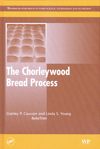Snack Food & Wholesale Bakery magazine interviewed Janice Anderson, vice president of marketing for Flowers Foods, Thomasville, Ga., to discuss trends and new products in the bread aisle.
Snack Food & Wholesale Bakery: How are you communicating differently with consumers through merchandising and packaging to build brand awareness and differentiate your brands from the rest in the bread aisle”
Janice Anderson:We have a long-term relationship with our consumers and we foster that with ongoing consumer research, which is an integral part of our marketing and packaging decisions. In talking with our consumers, we know that they are much more interested today in making healthier food choices, but are time-crunched while shopping. That’s why we began to prominently display whole grain values on our bread packages back in 2006, so this information would be easier to find and read at a glance. Over the past few years, we’ve highlighted other better-for-you benefits on our packaging. To avoid too much clutter, we select those benefits we believe are most relevant for the product.
SF&WB:In a recent presentation to analysts, Flowers talked about the white bread and better-for-you white bread segments, the latter of which is about 15% the size of white bread. What are the growth rates and opportunities in these two segments? As a point of clarity, do you consider white bread a different segment from better-for-you white bread?
Anderson:We do look at better-for-you (BFY) white bread as separate from white bread. Although they are similar in appearance, taste and texture, BFY white bread appeals to that segment of white bread lovers who are interested in foods that offer certain health benefits. We createdNature’s Own Whitewheat, our BFY white bread and bun brand, for consumers who want to continue enjoying the taste and texture of the bread they-and their children-love, but also want a white bread with an enhanced nutritional profile. Whitewheat is an excellent source of calcium and iron, is a good source of fiber, and also is enriched with B vitamins.
Whitewheathas been a consumer favorite since we introduced it in 1991. In fact,Whitewheat leads the BFY category in sales and growth … for the latest 12 weeks ending November 29, 2009 [according to Information Resources Inc. data for its south region of the United States]. We had positive consumer response toWhitewheathamburger and hot dog buns when we introduced them in 2006. Both these items continue to enjoy nice growth, confirming consumers’ desire for great-tasting, good-for-you foods.
White bread still represents a sizeable portion of the overall bread category and it proves its overall value to bakers, retailers and consumers everyday in the bread aisle. Even health-conscious consumers tell us that they often “splurge” and buy white bread for specific sandwiches, such as BLTs.
SF&WB:Why did you roll out the potato, Italian and wheat soft breads under theCobblestone Mill brand instead of theNature’s Ownbrand? Is theCobblestone Mill brand acting as a flanker brand forNature’s Own? Why is it important to show the bread without the end slices?
Anderson: Cobblestone Mill is our special occasion brand of premium specialty breads and buns so it made sense to introduce these three particular bread varieties under theCobblestone Millbrand. We removed the heel on these loaves to allow consumers to see the internal texture of the bread before purchasing.
SF&WB: Many bakers are making claims that specific ingredients in variety breads can add to consumers’ health, either by aiding in digestive, cardiovascular, cognitive and other ways. How far can bakers go with making such claims?
Anderson: Flowers is proceeding cautiously when it comes to jumping on the health claim bandwagon. Our No. 1 focus is to maintain the trust consumers have in our baked foods. We do this by using pure and wholesome ingredients and by being very sure of any health benefits we elect to call out on our packaging.
That said, we don’t know just how far bakers may go with additives that offer specific health benefits. UnderNature’s Own, we already have breads with high whole grain values, more fiber, no sugar, less calories and Omega-3. As we continue to review the latest nutritional and health research and listen to what our consumers say they want, we will look at other possible ingredients and additives - but again, we will proceed with caution.
SF&WB: Why have “flat” sandwich rounds taken off? Who is the core consumer here? Why have flatbreads in general emerged in popularity?
Anderson: According to our consumer research, flat sandwich rounds are popular with adults who simply want less bread in their sandwiches. That seems to be the overriding appeal, even more than the 100-calorie attribute. Consumers also seem to enjoy its flexibility.Nature’s OwnSandwich Rounds can be used in a sandwich or as toast. They also can substitute for traditional hamburger buns.
SF&WB:Again, who is the core consumer with the 100-calorie sandwich rounds and thin-slice bagels? Why was the consumer response to this concept so enthusiastic?
Anderson: The core consumer for these items is the consumer who purchases soft variety breads.
The Nature’s OwnThin Bagels concept was very enthusiastically received when we tested it with consumers. Many of them told us that while they enjoyed the taste and texture of bagels, they simply could not eat an entire bagel and would either eat only half or tear out some of the inside before they ate it.
These consumers can now enjoy an entire bagel since our Thin Bagels are about half the size of a standard bagel and contain only 140 to 150 calories, depending on the variety. Unlike mini bagels, they work well in a toaster and can make a regular-size sandwich.
SF&WB:Are the rollouts of portion-controlled bread products a reaction to calories, carbs, sodium intake or weight control? Are we seeing a morphing of the low-carb craze?
Anderson: It’s hard to say if the growth of portion-controlled items is a variation on the low-carb craze. There always will be people who monitor their carb intake as they do other foods in their diet. It seems that for most consumers, there is an overarching interest in breads that offer specific value, whether that be whole grain, fiber, portion control or something else. Products likeNature’s OwnSandwich Rounds and Thin Bagels offer a number of values [such as] significant whole grains, fiber and portion control to satisfy consumers.
SF&WB:How will the 2010 Dietary Guidelines impact the bread aisle?
Anderson:It’s still too early in the process to answer that question with any certainty. One area of change that may occur is a shift from recommending specific nutrient (“eat less fat, eat more fiber”) to recommending specific foods (“eat these kinds of foods”) to help individuals make better food choices and consume the nutrients they need. The guidelines also may emphasize choosing less calorie-dense and more fiber-rich foods. It would seem that all of these would benefit whole grain breads. Another change under consideration is lowering the recommended sodium intake. Since breads are already fairly low in sodium, this may have minimal impact in the bread aisle, but we may see bakers further reducing the sodium content of some offerings as we did with ourNature's Own Light breads in 2008.
Editor’s Note: Check out next week’s installment of SF&WB’s Operations Weekly on adding value to the bread aisle.
Adding Value to the Bread Aisle (Part II)
Looking for a reprint of this article?
From high-res PDFs to custom plaques, order your copy today!






